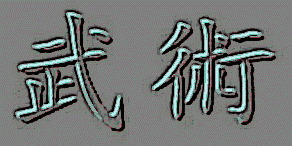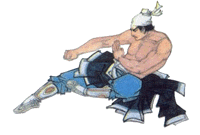

Musée national, Athènes, photo de l'auteur
Fighting bare-handed has been a natural part of human behaviour all over the planet since the earliest times, just as young animals learn how to defend themselves by fighting. The institutionalization of bare-hands fights in competitions at the highest level, as in Ancient Greece, required a systematic methodology in order for a protagonist to be effective against a trained opponent. Professionalism in combat sports in China came into fashion from the end of the Warring States in around the fourth Century BC, originating mainly from Central Asia and the steppe nomadic warriors. The first question asked by a newcomer to the subject might be: what did the ancient Olympic Games have to do with China? Why would the Greeks have had any influence on Asian combat sports? Every society has developed some kind of combat sports over the ages, mainly with weapons, for fighting and defence purposes. After investigating bare-hands combat sports iconography and archaeological discoveries, I came to the conclusion that ancient combat sports competitions in Asia showed common characteristics, and that they became institutionalized mainly after the colonization of Alexander the Great. Improving on past traditions, the practice of combat sports within the gymnasium built in every new Greek-style city in the Seleucid Empire included naked athletics as an imperative part of the education. This distinctive science of bare-hands combat sports that developed in the Greek world was initially practiced as a means to improve techniques in warfare and as a religious cult, taking the form of sacred Games. These were not only to please the gods, but were also a show for the kings, where brave individuals could obtain money and fame in a war-orientated society using the heroic model as a path to achievement. Unlike outside the Hellenistic world, training in bare-handed combat sports was imperative for the educated officers, and physical fitness went together with skills for use on the battlefield. A complete science of naked combat sports was transmitted from Greece to Asia by trained athletes migrating to the new Eastern colonies. This ideal of a strong heroic individual was emphasized by the Greeks, together with ideas of freedom and a quasi-religious way of physical training, based on daily improvement of strength and techniques. The main deity symbolizing this achievement was Heracles, who was transmitted in the Kushana Empire, where he served as a model for the Buddhist knights of Parthian, Greek or Saka origins, under the name of Heraclio. With the opening of the Silk Road, the divinity Heraclio would be transmitted further to China under the name Jingang, and he was present in the first Buddhist monasteries, where he was be worshipped by a class of fighting monks, practicing daily exercises. Although bare-hands combats sports were not restricted to Buddhist monasteries, the introduction of bare-hands competitions into China started as a fashion coming from Hellenized Central Asia. In this research, I demonstrate the lineage and continuation of athletics Games from Greece to China. Of course, there were local influences as well, and the divinity of Heracles would be strongly influenced by Buddhist principles, but in his association with combat sports, he remained “Greek” all the way to China, because he retained a similar function; the cult of physical and psychological strength and the notion of cleansing the earth from evil. Thus, he served as a model for the educated Kushana aristocracy. The concept of a Buddhist fighting elite versed in bare hands competitions in China was accompanied by the rise of foreign professional jugglers, athletes, actors, yogis and other specialists versed in particular physical abilities. The strong influence of Chinese philosophy and ideas certainly gave a particular orientation to Chinese bare-hands combat sports soon as they will be institutionalized in the Chinese armies, but this would develop mainly after the Wei dynasty. The improvement of bare-hands combat sports in northern China became a way to rise up in the social level in the Three kingdoms period, and it built on many various technical skills from the past. Again, in the Wei times, the ideals of the “strong-man” (Lishi) was symbolized by Jingang and he would be the central point of reference for the practicers of bare-hands combat sports, developing mainly in the Shaolin monastery. Before the Wei dynasty, there were no particular references by the Han to a strong-man deity, combat sports being restricted to special champions or officers in the army. However, the cult of Heracles-Jingang would lead to a wider development of disciplines as more followers engaged in the quest for individual strength in order to defeat adversaries in chaotic societies or in the battlefields. The god Heracles-Jingang was idealized as a model of inner and outer strength by Buddhist followers in northern China. Between the third to the sixth century of our era, the chaotic societies initiated by the various nomadic warlords and their dynasties will strongly develop bare-handed fighting competitions and technical researches. For this complex study that spans about one thousand years of institutionalization of bare-hands combat sports cults in Asia and East-Asia, I needed to take into consideration the pre-Hellenistic combat sports cults that occurred in Persia and China before the conquest of Alexander the Great. I divided my research into ten chapters, proceding chronologically from the most ancient records of bare-hands combat sports, although the study mainly concerns the period situated between the foundation of the Olympic Games to the creation of the Shaolin monastery in China. Therefore, I entitled my research “Ancient Olympic combat sports in the Far-East; from Olympia to Shaolin” together with a Chinese name: Jingang lishi zhuan (金剛力士傳) or “The Transmissions of Heracles-Jingang”. In this research, I prove a link and a continuation of the tradition of bare-handed combat sports from Greece to China, and I also take Heracles-Jingang as the principal symbol of this very important common cultural heritage between East and West. This research also shows that even in despotic systems, combat sports practice had this very important function of improving the individual habillity to defend himself against outside dangers, and naturally developing as well his conception of freedom against oppression..
Lucas Christopoulos
Phd. Student
Arts and Sciences Dept.
Hiroshima University
17.01.2011

